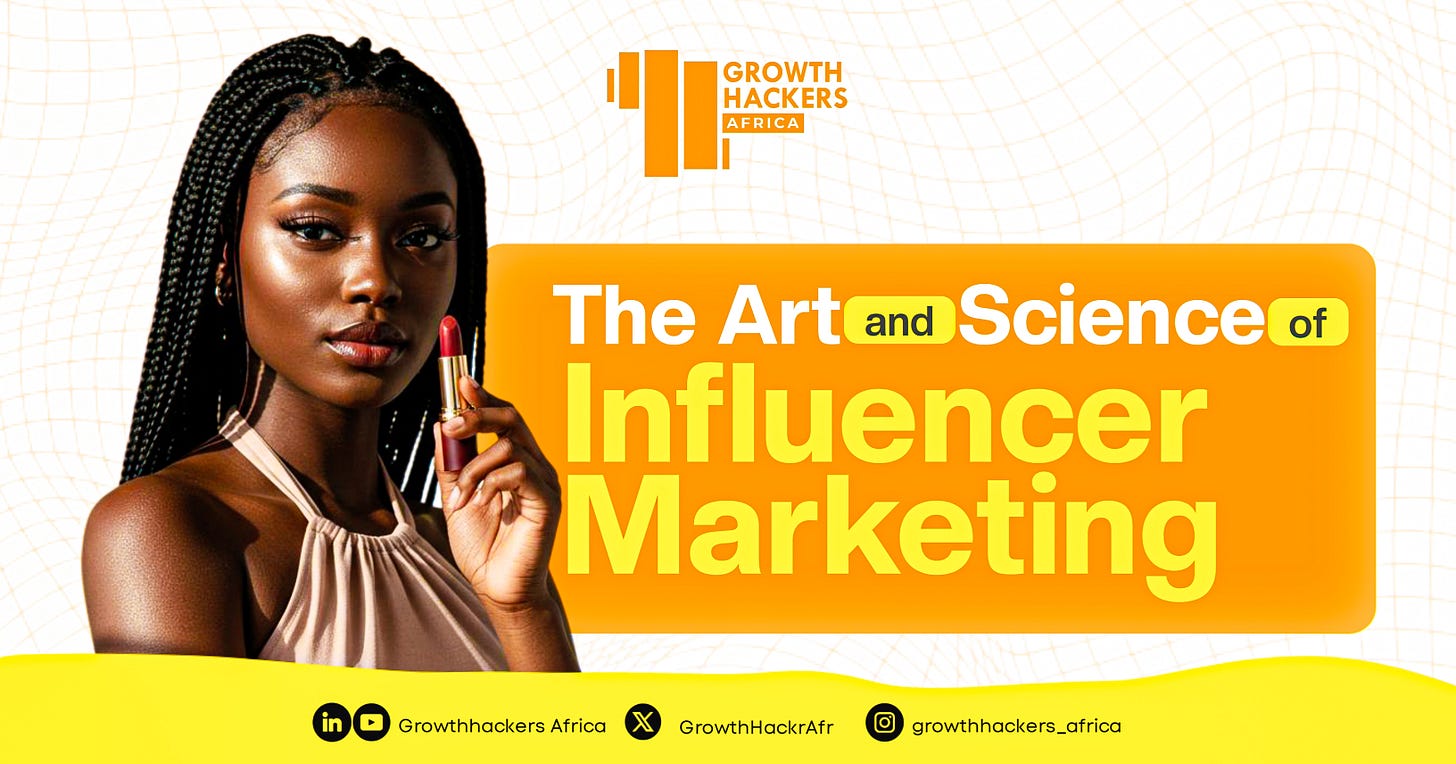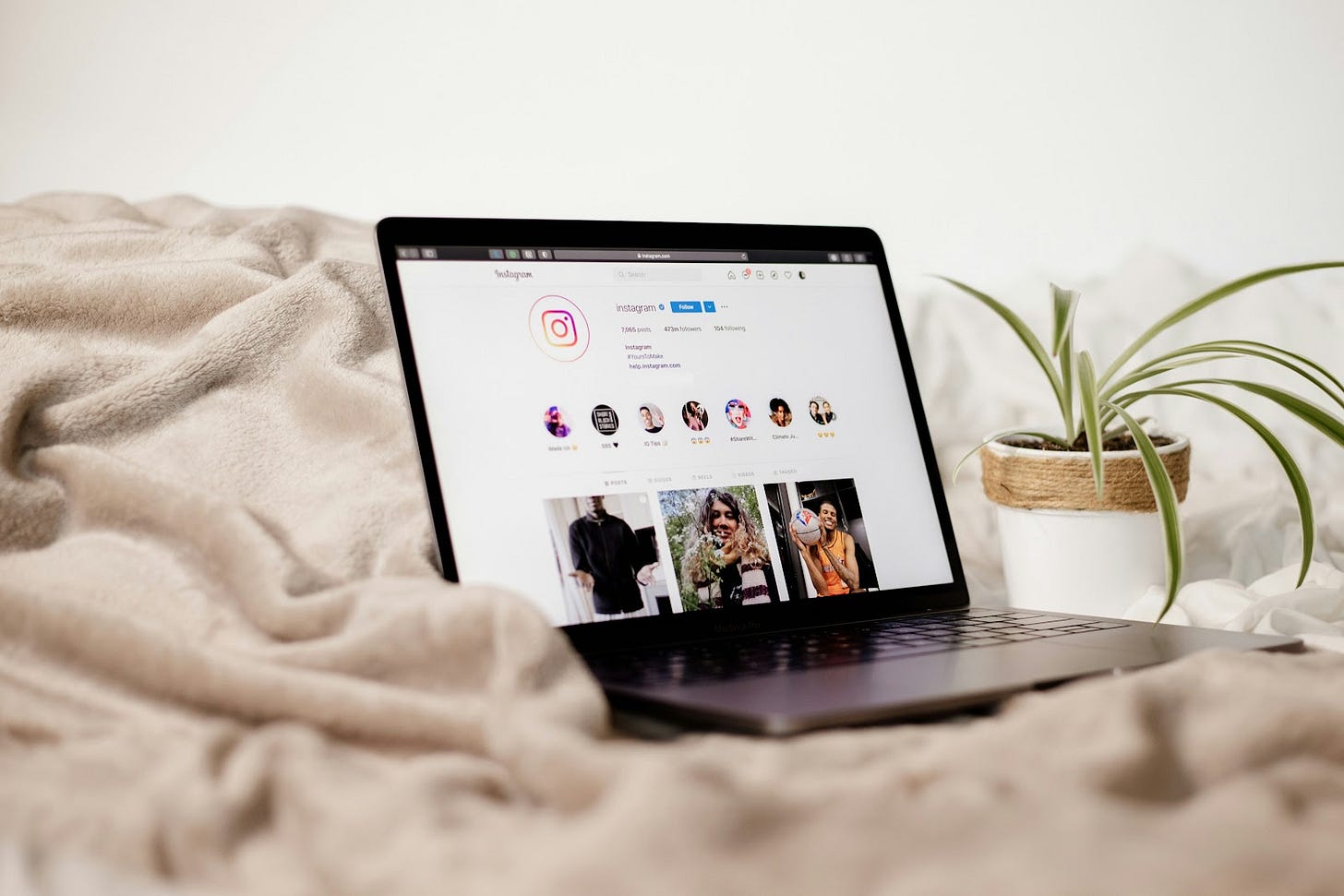The Art and Science of Influencer Marketing:
Utilizing Influencer Marketing as a tool for effective customer acquisition.
Introduction
Influencer marketing is a trend that is gradually reshaping the digital marketing space. Having taken the digital marketing world by storm, it is now considered a ‘new normal’, an excellent choice by brand's to effectively reach their target audience.
According to a 2019 survey by Mediakix, almost 90% of marketers found that ROI from influencer marketing was comparable to or better than other marketing channels.
This statistic suggests that influencer marketing is an effective way to drive sales.
It has become gradually popular and in demand as it continues to evolve alongside Social Media. Influencer Marketing will continue to grow along with the number of influencers in the social space. With 2.5 billion monthly active users on Facebook, 1 billion monthly active users on Instagram, 800 million monthly active users on TikTok, and 330 million monthly active users on Twitter, as of 2024.
Influencer marketing is when brands partner with popular social media users to promote products.
It allows brands and companies to tap into a vast network of potential customers and reach individuals who may need to actively seek out these brands' products or services.
It has proven highly effective in driving consumer engagement and active purchase.
Piggybacking on the trust influencers have built in their fan base can help brands and businesses gain an audience who want to resonate with those they deem to be important, or in other words, influential.
When Should I Use Influencer Marketing?
Brands should be purpose-driven. Consumers like it when brands show their relevance to social causes, and an excellent way for brands to do this is by teaming up with influencers who are socially conscious, aware and responsible. Using time sensitive contents can help brands build a genuine and authentic fan base. For example, a brand that deals with summer dresses and fashion could create relevant content showcasing products like floral summer gowns, hats, sunscreen and others.
Secondly, selling a new product or offering a new service can be challenging, because consumers are obviously not aware of it. So for products like this, a customer's purchasing decision can be heavily influenced by the opinion of someone famous or someone that they look up to, Influencers.
Thirdly, Influencer Marketing should be used when brands seek feedback from their customer or audience. It helps brands build a realer connection with their customers.
Fourthly, and lastly, when a company aims to maximize visibility on already scheduled marketing campaigns. Influencers can help spread the word and get everybody on board. They have a teeming crowd of loyal supporters who take their recommendations to heart. All it takes is one post, singing the praises, or demonstrating the use of a product.
In the typical influencer marketing scenario, brands collaborate with influencers to promote products and services through sponsored posts, stories, or videos. However, as the space continues to mature, some brands are embracing more creative approaches, aka “Non-typical campaigns”. Non typical campaigns may include brand collaborations, where brands partner with influencers and they co-create products or limited-edition collections. This makes the influencer feel more like a partner than just a promoter. It also includes Experiential Marketing, where influencers are invited to unique brand experiences (such as events or trips) and have them document it for their audience. The last type of non-typical marketing to be considered is Long-Term Partnerships, where instead of one-off campaigns, brands opt for ambassador programs where influencers represent the brand consistently over time.
Identifying The Right Influencers
To find the right influencers for your brand, you should have a criteria that must be met. With a large number of Influencers available, it is vital to a marketing campaign to have a criteria from the start. Criteria for a potentially productive collaboration between influencers and brands should include:
Influencers Engagement: Engagement is a metric that measures how often an Influencers audience engages with their content.
Influencers Image: This is of primary importance as it automatically rubs off on the brand.
Influencers Quality: The quality of an influencer's content should align with the brand's image and values.
Influencers Authenticity: Authentic influencers have a genuine connection with their audience.
Influencers Reliability: When working with an Influencer, you should be able to count on them.
Influencers Audience size: The size of an Influencers audience matters, same as their diversity.
Influencers Cost: Cost is always the bottom line regardless of industry or department. Every influencer has their pricing structure, some charge per post, others per campaign, and still others, in exchange for free products.
An influencer marketing tool is a software that helps marketers find, engage with and make deals with influencers in their niche. Tools like these are:
For social listening: Tools like Brandwatch, Meltwater, Brand24 and Traackr are used by brands to find influencers who are already participating in conversations related to their industry or niche.
For identification: Tools like CreatorIQ, TrendUp and Heepsy can be used to filter influencers and check profile analytics for every social network individually.
For outreach: Tools like Pitchbox and Ninja Outreach are used to schedule emails and follow-ups, keep track of conversations and manage influencer relationships through the platform.
For management: Tools like Influencity and Upfluence provide influencer identification, analysis, campaign management, product seeding, affiliate management, and various other services. You can also manage influencer payments from within the platform.
Crafting Successful Influencer Campaigns
Once you’ve identified the right influencers, it's time to build a campaign that connects authentically with the audience and achieves your brand’s objectives.
Set Goals and KPIs: Like any marketing initiative, start by defining your objectives and key performance indicators (KPIs).
Identify Your Audience Personas: By understanding the demographics, psychographics, interests, pain points, and behaviors of your target audience, you can tailor your messaging, content, and offerings to better resonate with them.
Research Relevant Influencers: Researching relevant influencers is a crucial step in building a decent influencer marketing strategy.
Outline a Content Strategy: it is best to share a comprehensive brief with them, detailing goals, target audience and relevant details, then allow them propose their content strategy to make it happen.
Track Performance: Tracking performance is crucial for evaluating the effectiveness of your content strategy.
Review, Repeat & Optimize!: Conclude your campaign with an in-depth review to analyze what worked well and what didn't.
Collaborating for Authenticity: One of the most crucial factors in an influencer marketing campaign is authenticity. Building a strong, genuine relationship with influencers ensures they’re excited and eager to work with you and that they genuinely believe in your product. Consider long-term partnerships that go beyond just one-off posts, as these collaborations feel more authentic and can lead to better engagement.
Case Studies of Influencer Marketing Success
Kuda: Kuda, a digital-only bank, effectively uses influencer marketing to promote its services, particularly targeting young users. They partner with influencers on platforms like Instagram, using their reach and credibility to drive app downloads and engagement. One prominent example is their collaboration with Erica Nlewedim, an ex-Big Brother Nigeria housemate, as a brand ambassador. This campaign, #KudaXErica, is aimed at reaching a large audience and increasing Kuda's brand visibility.
Boomplay: In May 2022, Boomplay, Africa’s leading music streaming platform boasting over 70 million monthly active users and a catalogue of 75 million songs, launched its debut rap cypher campaign, #PassTheMic, to revive Nigeria’s vibrant rap culture.
Chipper cash: Where fintech meets pop culture. Their campaign type was a multi-layered influencer strategy. Chipper cash ran several campaigns featuring; Mr Macaroni in hilarious skits promoting cross-border payments, Erica (ex-BBNaija star) to appeal to the fashion-forward, celebrity-focused crowd, tech creators like Fisayo Fosudo to explain Chipper’s crypto and investing features. Chipper reached different segments of its target market, from everyday users to crypto-curious young professionals—through influencers that aligned with each persona.
Measuring Campaign Effectiveness
Metrics to Track
Engagement: The simplest way to measure an influencer’s impact is by tracking engagement—likes, comments, shares, and direct interactions with the post. High engagement automatically indicates that the content resonated with the audience.
Traffic and Sales: Custom links or discount codes can help measure how much sales were directly driven by the influencer’s efforts(posts and advertisements). Google Analytics and tools like Bitly are used to track website visits from influencer posts.
Brand Sentiment: It’s important to track not just how many people saw or interacted with a post, but also how they felt about it. Social listening tools help brands monitor mentions and assess whether the sentiment around the brand is positive or negative.
Tools for Campaign Measurement
Several platforms can assist in tracking and analyzing the success of influencer marketing campaigns:
Google Analytics: Use UTM(Urchin Tracking Module) parameters to track traffic from influencer posts.
Sprout Social or Hootsuite: These tools allow you to track engagement across social platforms.
Brandwatch: This tool helps you monitor overall brand sentiment and mentions in real-time.
Conclusion
If you heard that influencer marketing has become the best strategy to increase brand awareness, you heard right. To get the best results, make sure to Set Goals and KPIs, Identify Your Audience Personas, Research Relevant Influencers, Outline a Content Strategy, Track Performance and Review, Repeat & Optimize!
Moving forward, the future of influencer marketing in the digital world will most likely see more innovative approaches and deeper collaborations, allowing brands to stay ahead in the competitive digital landscape. See how industry experts share practical nuggets on Influencer Marketing on GrowthHackers Africa YouTube channel.






Head a great example of how influencer marketing can transform a video game's growth trajectory at this year's MAU.
Scopely, the developers of Monopoly GO, held a contest where users could pitch new collectible items which the team would then add to the game. But instead of having users submit ideas directly to Scopely, they used influencers to spread word of the contest, and told users to comment their ideas on the influencer's posts.
Essentially, they hijacked the TikTok algorithm to drive engagement on influencer's sponsored posts, helping the posts go viral.